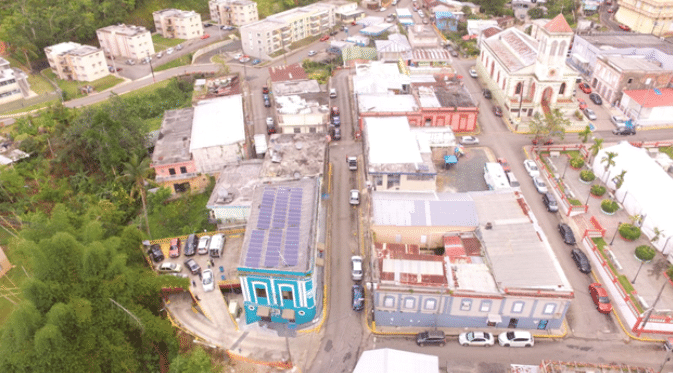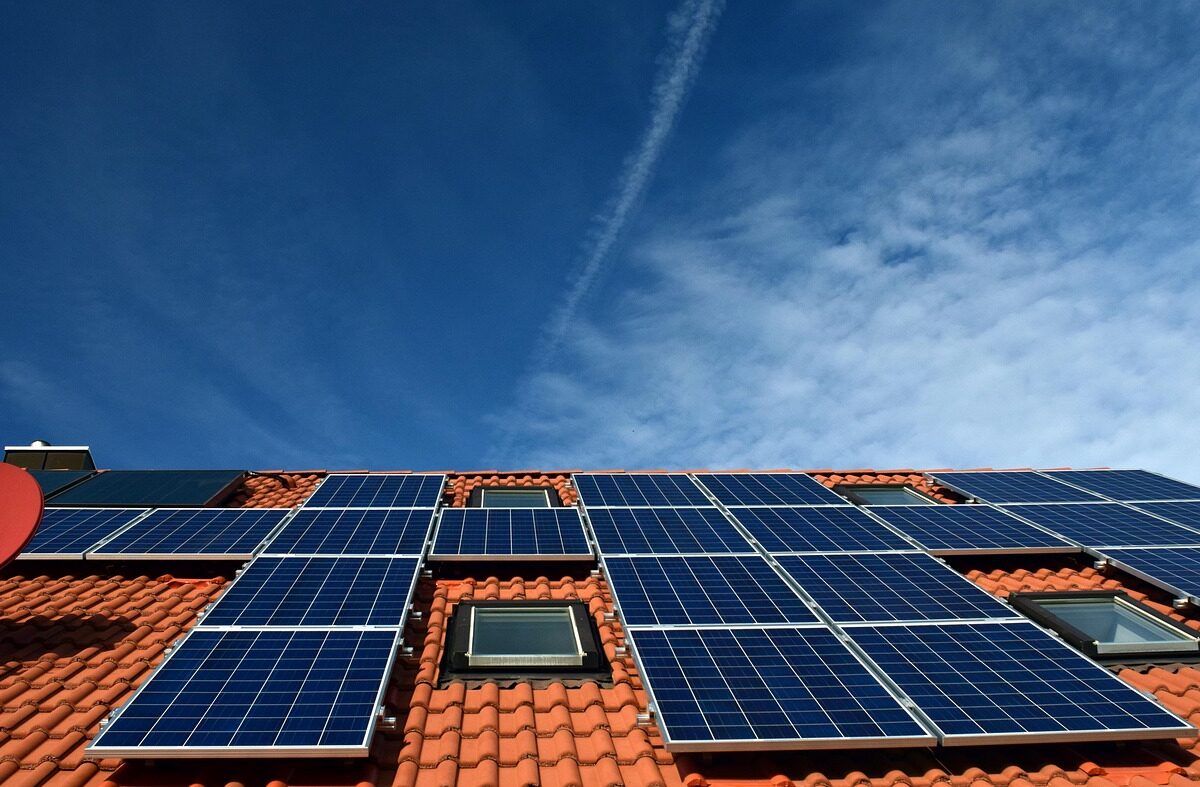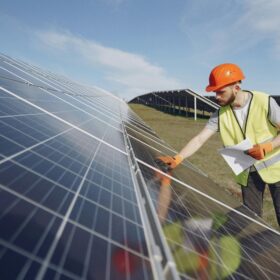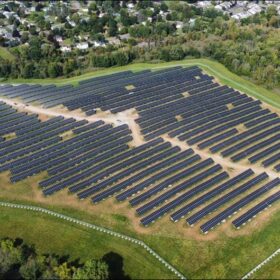By Dr. Frank Wasko, Program Director, Clean Coalition
Microgrids have become crucial to the rebuilding effort in Puerto Rico in the six months since Hurricane Maria. The situation there provides a unique illustration of the importance of microgrids with solar+storage.
Solar emergency microgrids
While financial, branding, and environmental motivations have led the mainland U.S. to install solar at a breakneck pace for the past 10 years, Puerto Rico is now installing solar emergency microgrids at some of its hospitals and medical clinics for a more urgent reason. When the next hurricane season starts up again in June, hospitals and clinics must be equipped to power lights, refrigeration for medication, and life-saving equipment. Solar emergency microgrids will ensure continuous operation of critical loads at these facilities.
When designing a Solar emergency microgrid — with the three key components of solar photovoltaics, energy storage, and monitoring, communications, and control — engineers think through some initial questions. What are the essential loads that need to be powered by the solar emergency microgrid, and how long of an outage is anticipated? A key part of the solar emergency microgrid is the separation of critical and non-critical loads, so that solar+storage can island from the grid and provide indefinite backup power to critical loads.
With solar emergency microgrids, essential loads can be kept running at priority facilities, such as hospitals, police and fire stations, emergency operations centers and shelters, and critical communications and water infrastructure. Puerto Rico experienced difficulties after the hurricane because its vulnerable electric grid could not power these basic services. The island relied on dirty, noisy diesel generators while waiting for crews to repair damaged transmission and distribution lines.Diesel fuel shortages at businesses and hospitals soon compounded the issues.
Building back right in Puerto Rico
On April 3, on behalf of the Clinton Global Initiative, President Bill Clinton announced the Solar Saves Lives project, a coalition made up of the Solar Foundation, Direct Relief, the Hispanic Federation, the Puerto Rico Primary Care Association Network, and New Energy PR. This group is working together to coordinate installation of solar emergency microgrids at 12 of the 62 hospitals and medical clinics in Puerto Rico.
The coalition mobilized after Hurricane Maria knocked out power to 95 percent of the island in September 2017. If Puerto Rico had had more distributed energy resources such as rooftop solar as part of islandable microgrids, power outages could have been minimized. In addition, the island’s power would have been far cleaner, given that 98 percent of Puerto Rico’s power comes from fossil fuels.
While many hoped that the rebuilding effort by the Federal Emergency Management Agency (FEMA) would result in replacing the dirty electric power system with clean renewable energy, FEMA announced they would rebuild the electric grid the way it had been. According to the Stafford Disaster Relief and Emergency Assistance Act, which directs federal emergency response efforts, agencies are to allocate “the cost of repairing, restoring, reconstructing, or replacing a public facility or private nonprofit facility on the basis of the design of such facility as it existed immediately prior to the major disaster.” This guideline has been interpreted as also applying to critical infrastructure such as the power system.
Clearly, a fossil-fuel-powered electric grid — one that relies on shipping in those fossil fuels — is not an ideal energy system for an island with abundant sunshine. Furthermore, this energy system costs Puerto Rican Americans two to four times per kilowatt-hour what mainland Americans pay for electricity. Rebuilding a centralized electric grid does not make sense on many fronts — primary among those is that it leaves the island vulnerable in the face of the impending hurricane season.
This situation led to the formation of the Solar Saves Lives project, which began after Hurricane Maria as an effort to move toward a more clean and resilient electric grid. The project has already completed one solar emergency microgrid on the Migrant Health Clinic in Maricao, Puerto Rico. This microgrid will allow the clinic to serve its community even when the grid goes down.
Resilience for all communities
Puerto Rico’s work to build resilient energy systems shows the mainland U.S. the importance of clean local energy in the face of natural disasters. The hurricanes that hit Texas and Florida, and the wildfires in Northern California last fall, devastated communities there. All three areas would have benefited from solar emergency microgrids for their emergency response and medical centers.
In Northern California, the 2017 wildfires charred 210,000 acres, destroyed 8,900 structures, forced over 90,000 people to evacuate from their homes, and killed at least 44 people. This was the most destructive group of wildfires in California history and the costliest on record, causing at least $9.4 billion in insured damages. The nonprofit Clean Coalition, the project lead for the Peninsula Advanced Energy Community (PAEC) Initiative, is applying what was learned in the PAEC project to its collaboration with North Bay communities to develop resilient energy systems there. Solar emergency microgrids are key to providing indefinite backup power for critical services in this region.
The PAEC Initiative is also working on other microgrid projects in the region. The initiative has modeled three scenarios in which a solar emergency microgrid could provide indefinite backup power for a community emergency shelter in San Mateo County, California. All three scenarios would reduce power costs while providing indefinite renewables-driven backup power for this community resource.
Solar emergency microgrids provide communities an unparalleled trifecta of economic, environmental, and resilience benefits. Projects like these on the mainland, as well as Puerto Rico’s Solar Saves Lives project, show not only what is possible but also what is necessary. As we face a changing climate with stronger storms and larger wildfires, we need to plan and build more resilience into critical infrastructure systems. If we plan for these possibilities now, then when disasters do happen, our police departments, fire departments, hospitals, emergency shelters, and water and communications systems will have the indefinite backup power they need to serve their communities.
The views and opinions expressed in this article are the author’s own, and do not necessarily reflect those held by pv magazine.
This content is protected by copyright and may not be reused. If you want to cooperate with us and would like to reuse some of our content, please contact: editors@pv-magazine.com.








By submitting this form you agree to pv magazine using your data for the purposes of publishing your comment.
Your personal data will only be disclosed or otherwise transmitted to third parties for the purposes of spam filtering or if this is necessary for technical maintenance of the website. Any other transfer to third parties will not take place unless this is justified on the basis of applicable data protection regulations or if pv magazine is legally obliged to do so.
You may revoke this consent at any time with effect for the future, in which case your personal data will be deleted immediately. Otherwise, your data will be deleted if pv magazine has processed your request or the purpose of data storage is fulfilled.
Further information on data privacy can be found in our Data Protection Policy.